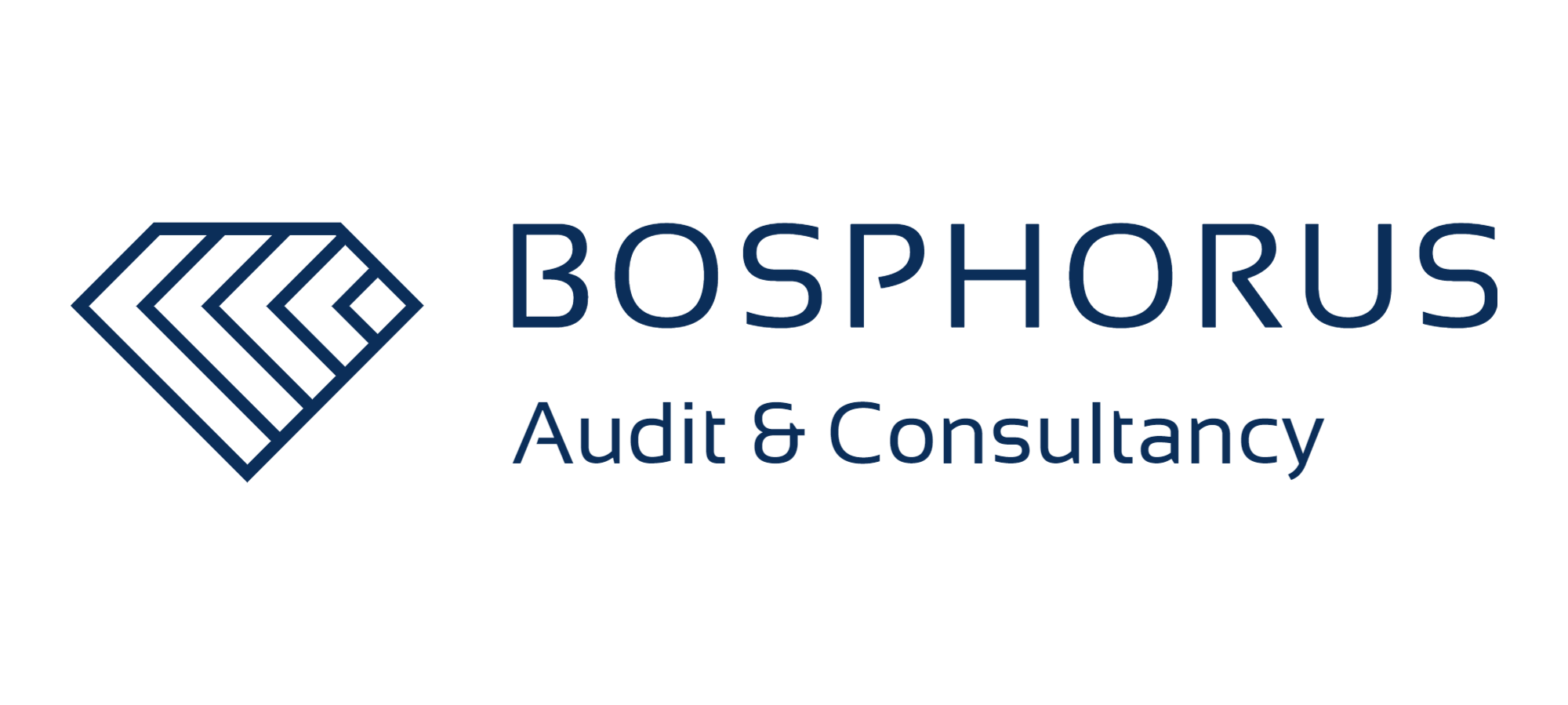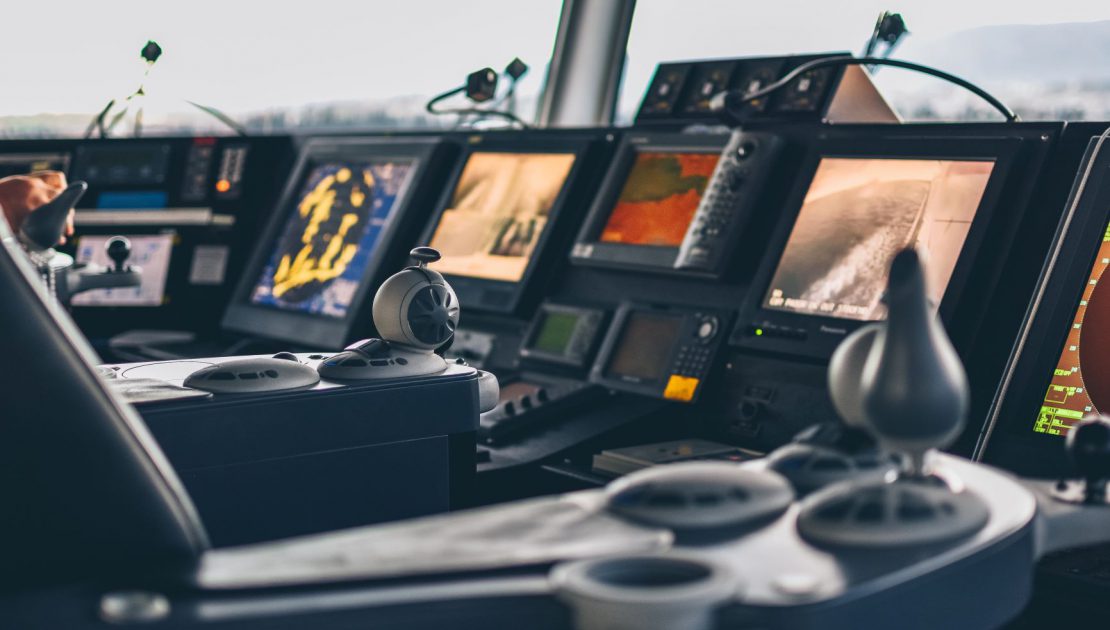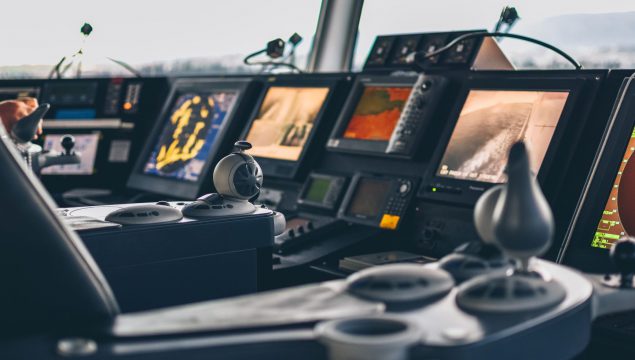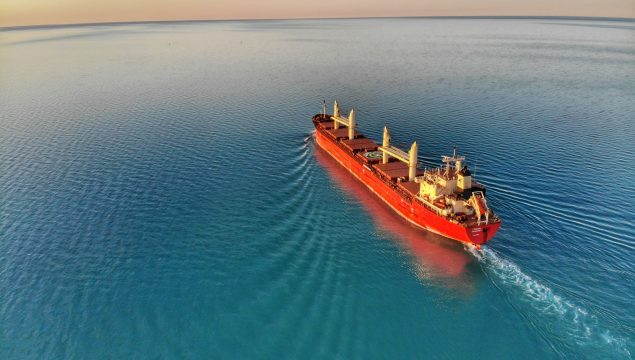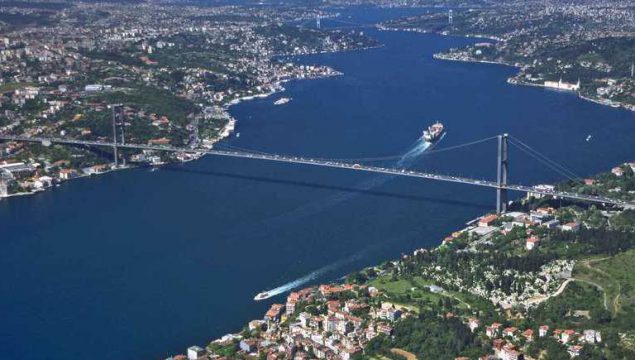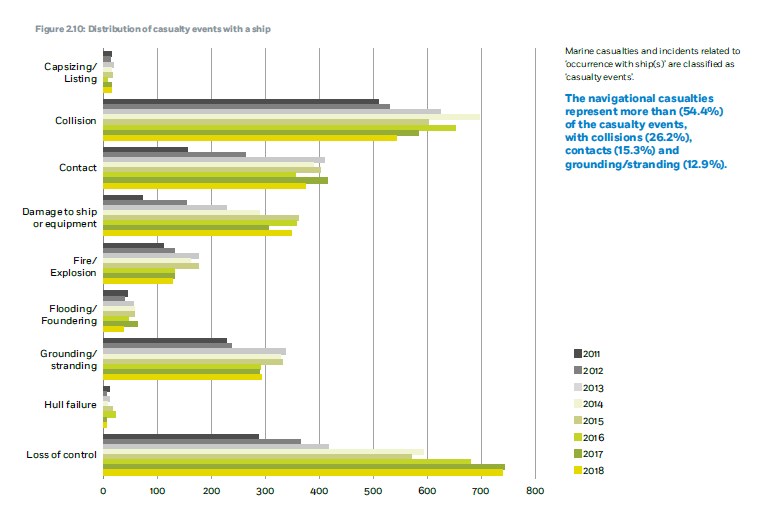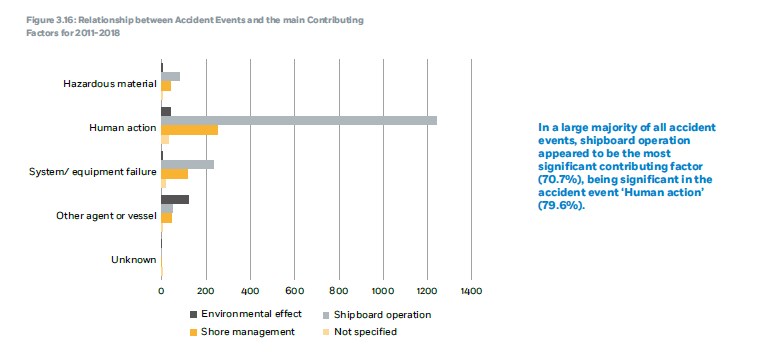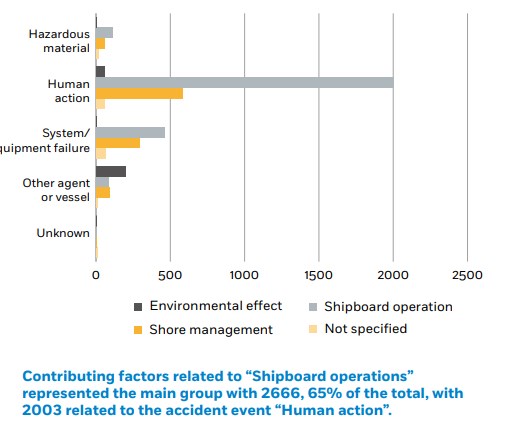Ocimf – Proactive Use of VDR
Collisions, contact damage/allisions and groundings are commonly categorised as navigational incidents when assessing incident statistics.
Below table provides the details of the relative percentages of the causes of oil tanker casualties in EMSA’s statistics from 2011 to 2018. These figures show that navigational casualties accounted for 48.7% of the total oil tanker casualties reported by EMSA during that period.
These results indicate that the percentage of navigational incidents has remained virtually constant over the period despite the advances made in bridge training and the provision of technological aids.
It has been estimated that 75-96% of marine accidents can involve human error (see Allianz Global Corporate & Specialty’s Safety and Shipping 1912-2012. From Titanic to Costa Concordia). In addition, analysis of almost 15,000 marine liability insurance claims between 2011 and 2016 showed human error to be a primary factor in 75% of the value of all claims analysed (see Allianz Global Corporate & Specialty’s Safety & Shipping Review 2019). It is evident that the major causes of collisions and groundings will be human factors and navigation-related rather than due to factors such as equipment failure or weather. This indicates that there is opportunity to reduce the incidence of such accidents further. One of the ways this could be achieved is via VDR data, either through the promotion of lessons learned from previous incidents, or by proactive review of VDR data on a regular basis, e.g. by conducting remote navigational assessments and audits.
